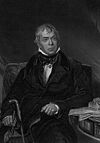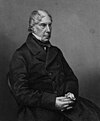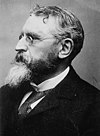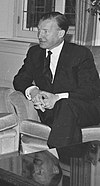Taoiseach of Caldia: Difference between revisions
No edit summary |
|||
| Line 21: | Line 21: | ||
{{Politics of Glytter}} | {{Politics of Glytter}} | ||
The '''Taoiseach''' is the [[Government of Caldia|head of government]] or {{wp|prime minister}} of [[Caldia]]. The | The '''Taoiseach''' is the [[Government of Caldia|head of government]] or {{wp|prime minister}} of [[Caldia]]. The Taoiseach is appointed by the [[Monarchy of Caldia|monarch]] after securing the support of the lower house of the [[Tionól]], the [[Comhthionól Náisiúnta]]. In order to remain in office, the Taoiseach a majority in the Comhthionól must continue to provide their support. The current Taoiseach is [[Stiofán Mac Suibhne]], {{wp|Member of Parliament|TC}}, who was appointed on 27 February 2019. | ||
The word means "chief" in the {{wp|Irish language|Ghaillish language}}. The earliest known use of the term is from a 5th- or 6th-century ogham inscription in both the Tenic languages. | The word means "chief" in the {{wp|Irish language|Ghaillish language}}. The earliest known use of the term is from a 5th- or 6th-century ogham inscription in both the Tenic languages. | ||
| Line 27: | Line 27: | ||
==Overview== | ==Overview== | ||
Under the [[Constitution of Caldia]], the | Under the [[Constitution of Caldia]], the Taoiseach is nominated by a simple majority of Comhthionól Náisiúnta from among its members. This means a Taoiseach must receive the support of 200 TCs in order to be nominated. Following a nomination, he or she is then formally appointed to office by the monarch. The monarch is required to appoint whomever the Comhthionól designates without the option of declining appointment. | ||
If the | If the Taoiseach loses the support of a majority in Comhthionól Náisiúnta, he or she is not automatically removed from office. If a {{wp|motion of no confidence}} in the Taoiseach is passed, he or she will be removed from office but the current government will remain in place. The Taoiseach's deputy, the Tánaiste, then assumes the powers of the position until the governing party names a new leader or until the legislative term ends. This happens infrequently, as it does not require a new election. Most often, a motion of no confidence in the [[Government of Caldia|Government]] is passed. If such a motion is passed, the Taoiseach is compelled to either resign or persuade the monarch to dissolve the Comhthionól and allow for new elections. The monarch may refuse to grant a dissolution, effectively forcing the Taoiseach to remain in office and form a care-taker government until the legislative term ends. To date, no monarch has exercised this prerogative despite it being permitted under the constitution. Additionally, the failure of a vote of confidence in the Comhthionól Náisiúnta may result in a Taoiseach's resignation or the dissolution of the sitting Comhthionól. | ||
When a Taoiseach submits his or her resignation, the incumbent officeholder continues to carry out the powers of the office until the nomination of a successor by the Comhthionól Náisiúnta. | |||
The [[ | As the head of government, the Taoiseach is responsible for nominating all additional members of the Government. Government ministers nominated by the Taoiseach at the start of their term are confirmed at the same time by the Comhthionól Náisiúnta. Ministers are then formally appointed by the monarch. Should a government minister resign or be dismissed during a legislative term, any new nomination must be individually approved by the Comhthionól Náisiúnta before the monarch can make the formal appointment. For a government minister to be dismissed, the Taoiseach advises the monarch to dismiss him or her from her office. The monarch is required to follow this advice by constitutional convention. The Taoiseach is supported by the [[Cabinet of Caldia|Executive Bureau]], the government department responsible for assisting him or her in executing the powers of the office. The Taoiseach's Office is explicitly responsible for supporting the Taoiseach, but all other agencies within the Executive Bureau offer support in practice. | ||
In addition to, the Taoiseach is also given the constitutional power to directly appoint fifteen members of the [[Seanad Glítteann|Seanad]]. | |||
Taoiseachs are also members of the [[Council of State (Caldia)|Council of State]], where they serve from their ascension to the office until their death. | Taoiseachs are also members of the [[Council of State (Caldia)|Council of State]], where they serve from their ascension to the office until their death. | ||
| Line 39: | Line 41: | ||
==History== | ==History== | ||
The position of | The position of Taoiseach was created in 1857 under the Instrument for Governance Act of 1857. Following the [[Silent Revolution]] and the demand for greater political representation, the creation of the Comhthionól Náisiúnta would result in the demand for the post. [[Elton I of Caldia|King Elton I]] and the Seanad both approved of its creation. | ||
[[Image:Walter Scott statue, Glasgow.JPG|thumb|left|150px|A statue of [[Dónall Ó Conaill]], the first | [[Image:Walter Scott statue, Glasgow.JPG|thumb|left|150px|A statue of [[Dónall Ó Conaill]], the first Taoiseach, in his native [[Shanbally]].]] | ||
The creation of the office would remove considerable authority from the Seanad, and as such made the principal house of the Tionól. | The creation of the office would remove considerable authority from the Seanad, and as such made the principal house of the Tionól. | ||
The office was predeceased by the Laird Chancellor. Under the Constitution of Caldia, executive authority was held by the monarch, who would often delegate such authority to the Laird Chancellor. The position of Laird Chancellor has its earliest roots in the thirteenth century during the reforms of [[Alastar of Caldia|King Alastar]]. However, both the monarch and the Laird Chancellor retained significant authority. The Laird Chancellorship was almost always held by [[Peerage of Caldia|peer]] or {{wp|bishop}}. The only | The office was predeceased by the Laird Chancellor. Under the Constitution of Caldia, executive authority was held by the monarch, who would often delegate such authority to the Laird Chancellor. The position of Laird Chancellor has its earliest roots in the thirteenth century during the reforms of [[Alastar of Caldia|King Alastar]]. However, both the monarch and the Laird Chancellor retained significant authority. The Laird Chancellorship was almost always held by [[Peerage of Caldia|peer]] or {{wp|bishop}}. The only Taoiseach who was a peer during their tenure was the [[Wallace_P._Fitzgerald,_Sr.|Duke of Holyhead]]. | ||
The first | The first Taoiseach was [[Dónall Ó Conaill]], a former Laird Chancellor, former senator and prominent reformer. He was a principal leader of the Silent Revolution. Ó Conaill was a member of and the leader of the [[Caldish Democrats]], the party which heavily campaigned for the creation of a more democratized house. Ó Conaill would serve two terms as Taoiseach, with the first lasting from 1857-1862 and the second from 1867-1872. | ||
Since the office's creation, there have been | Since the office's creation, there have been thirty-one Taoiseachs from four [[List of political parties in Caldia|political parties]]. All but eight Taoiseachs have served for the full duration of their five-year terms. [[Conán Ó Faoláin]] is the only Taoiseach to have died while in office while [[Liam O'Mathuna]] failed to defeat a motion of no confidence. Taoiseachs [[Brigid O'Reilly]] and [[Rory Mac Ailín]], and [[Humphrey Dumfries]] are the only Taoiseachs who have both been in power during {{wp|snap election}} and to have had their parties defeated in a snap election. [[Niamh Nic Uilliam]] and [[Frank Casarnach]] were dismissed from their office following intervention from the monarch. Alexis Walker resigned before the [[2017 Caldish general election]]. [[Jimmy O'Reilly]] resigned from the office after a diplomatic scandal in 2018. [[Séamus Ó Faoláin]] held the office for only three months before being defeated in the 2002 election. | ||
The Instrument for Governance Act of 1965 removed virtually all powers from the Seanad. As a result, the power of the Taoiseach increased significantly as they no longer had to cooperate with the [[Seanad Glítteann#Cathaoirleach|Cathaoirleach]] to ensure their legislation would pass the Seanad. The need for reform arose following the [[Government Crisis of 1965]] in which the majority of elected Seanad seats were held by the Liberty Party. As a result the Cathaoirleach, Dónal Ó Loingsigh, was a member of the Liberty Party. He used his seat to delay major reforms pursued by Taoiseach Mary O'Neill by refusing to put them up for a vote. Instead of calling for a snap election or waiting for the 1966 Seanad election, O'Neill instead pushed to strip the upper house of the bulk of its powers. The Instrument for Governance Act of 1965 was passed with a two-thirds super majority after negotiations between the parties sitting in the Comhthionól. After her reforms were implemented, the Taoiseach was granted the power to appoint eleven senators, an increase from the five previously permitted. This is done in order to ensure the government has a majority in the Seanad, which now only has the powers to review and delay legislation. | The Instrument for Governance Act of 1965 removed virtually all powers from the Seanad. As a result, the power of the Taoiseach increased significantly as they no longer had to cooperate with the [[Seanad Glítteann#Cathaoirleach|Cathaoirleach]] to ensure their legislation would pass the Seanad. The need for reform arose following the [[Government Crisis of 1965]] in which the majority of elected Seanad seats were held by the Liberty Party. As a result the Cathaoirleach, Dónal Ó Loingsigh, was a member of the Liberty Party. He used his seat to delay major reforms pursued by Taoiseach Mary O'Neill by refusing to put them up for a vote. Instead of calling for a snap election or waiting for the 1966 Seanad election, O'Neill instead pushed to strip the upper house of the bulk of its powers. The Instrument for Governance Act of 1965 was passed with a two-thirds super majority after negotiations between the parties sitting in the Comhthionól. After her reforms were implemented, the Taoiseach was granted the power to appoint eleven senators, an increase from the five previously permitted. This is done in order to ensure the government has a majority in the Seanad, which now only has the powers to review and delay legislation. | ||
==Family== | ==Family== | ||
The family of the | The family of the Taoiseach has no official title or role. However, family members are often identified as members of the Dara Teaghlaigh (''Second Family'') in the Caldish press. This is due to their secondary status to the [[Caldish Royal Family|Royal Family]]. The phrase Dara Teaghlaigh first became popular in the 1990s and has since remained. | ||
==Residence== | ==Residence== | ||
The official residence of the | The official residence of the Taoiseach, the Loveland House. The residence is located on the Royal Mile in [[Spálgleann]]. | ||
==List of office holders== | ==List of office holders== | ||
Revision as of 19:16, 8 April 2020
| Taoiseach of Caldia | |
|---|---|
| Style | Your Excellency (A Shoilse) |
| Residence | Loveland House |
| Nominator | Comhthionól Náisiúnta |
| Appointer | Monarch of the Caldia by convention, based on appointee's ability to command confidence in the Comhthionól Náisiúnta. |
| Term length | At His Majesty's pleasure, so long as elections are held no more than five years apart. |
| Inaugural holder | Dónall Ó Conaill |
| Formation | 1857 |
| Deputy | Tánaiste |
| Salary | €185,350 |
| Website | taoiseach.gl |
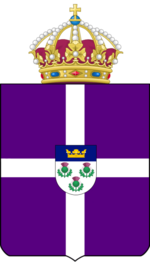 |
|---|
| This article is part of a series on the politics and government of Caldia |
|
|
The Taoiseach is the head of government or prime minister of Caldia. The Taoiseach is appointed by the monarch after securing the support of the lower house of the Tionól, the Comhthionól Náisiúnta. In order to remain in office, the Taoiseach a majority in the Comhthionól must continue to provide their support. The current Taoiseach is Stiofán Mac Suibhne, TC, who was appointed on 27 February 2019.
The word means "chief" in the Ghaillish language. The earliest known use of the term is from a 5th- or 6th-century ogham inscription in both the Tenic languages.
Overview
Under the Constitution of Caldia, the Taoiseach is nominated by a simple majority of Comhthionól Náisiúnta from among its members. This means a Taoiseach must receive the support of 200 TCs in order to be nominated. Following a nomination, he or she is then formally appointed to office by the monarch. The monarch is required to appoint whomever the Comhthionól designates without the option of declining appointment.
If the Taoiseach loses the support of a majority in Comhthionól Náisiúnta, he or she is not automatically removed from office. If a motion of no confidence in the Taoiseach is passed, he or she will be removed from office but the current government will remain in place. The Taoiseach's deputy, the Tánaiste, then assumes the powers of the position until the governing party names a new leader or until the legislative term ends. This happens infrequently, as it does not require a new election. Most often, a motion of no confidence in the Government is passed. If such a motion is passed, the Taoiseach is compelled to either resign or persuade the monarch to dissolve the Comhthionól and allow for new elections. The monarch may refuse to grant a dissolution, effectively forcing the Taoiseach to remain in office and form a care-taker government until the legislative term ends. To date, no monarch has exercised this prerogative despite it being permitted under the constitution. Additionally, the failure of a vote of confidence in the Comhthionól Náisiúnta may result in a Taoiseach's resignation or the dissolution of the sitting Comhthionól.
When a Taoiseach submits his or her resignation, the incumbent officeholder continues to carry out the powers of the office until the nomination of a successor by the Comhthionól Náisiúnta.
As the head of government, the Taoiseach is responsible for nominating all additional members of the Government. Government ministers nominated by the Taoiseach at the start of their term are confirmed at the same time by the Comhthionól Náisiúnta. Ministers are then formally appointed by the monarch. Should a government minister resign or be dismissed during a legislative term, any new nomination must be individually approved by the Comhthionól Náisiúnta before the monarch can make the formal appointment. For a government minister to be dismissed, the Taoiseach advises the monarch to dismiss him or her from her office. The monarch is required to follow this advice by constitutional convention. The Taoiseach is supported by the Executive Bureau, the government department responsible for assisting him or her in executing the powers of the office. The Taoiseach's Office is explicitly responsible for supporting the Taoiseach, but all other agencies within the Executive Bureau offer support in practice.
In addition to, the Taoiseach is also given the constitutional power to directly appoint fifteen members of the Seanad.
Taoiseachs are also members of the Council of State, where they serve from their ascension to the office until their death.
History
The position of Taoiseach was created in 1857 under the Instrument for Governance Act of 1857. Following the Silent Revolution and the demand for greater political representation, the creation of the Comhthionól Náisiúnta would result in the demand for the post. King Elton I and the Seanad both approved of its creation.
The creation of the office would remove considerable authority from the Seanad, and as such made the principal house of the Tionól.
The office was predeceased by the Laird Chancellor. Under the Constitution of Caldia, executive authority was held by the monarch, who would often delegate such authority to the Laird Chancellor. The position of Laird Chancellor has its earliest roots in the thirteenth century during the reforms of King Alastar. However, both the monarch and the Laird Chancellor retained significant authority. The Laird Chancellorship was almost always held by peer or bishop. The only Taoiseach who was a peer during their tenure was the Duke of Holyhead.
The first Taoiseach was Dónall Ó Conaill, a former Laird Chancellor, former senator and prominent reformer. He was a principal leader of the Silent Revolution. Ó Conaill was a member of and the leader of the Caldish Democrats, the party which heavily campaigned for the creation of a more democratized house. Ó Conaill would serve two terms as Taoiseach, with the first lasting from 1857-1862 and the second from 1867-1872.
Since the office's creation, there have been thirty-one Taoiseachs from four political parties. All but eight Taoiseachs have served for the full duration of their five-year terms. Conán Ó Faoláin is the only Taoiseach to have died while in office while Liam O'Mathuna failed to defeat a motion of no confidence. Taoiseachs Brigid O'Reilly and Rory Mac Ailín, and Humphrey Dumfries are the only Taoiseachs who have both been in power during snap election and to have had their parties defeated in a snap election. Niamh Nic Uilliam and Frank Casarnach were dismissed from their office following intervention from the monarch. Alexis Walker resigned before the 2017 Caldish general election. Jimmy O'Reilly resigned from the office after a diplomatic scandal in 2018. Séamus Ó Faoláin held the office for only three months before being defeated in the 2002 election.
The Instrument for Governance Act of 1965 removed virtually all powers from the Seanad. As a result, the power of the Taoiseach increased significantly as they no longer had to cooperate with the Cathaoirleach to ensure their legislation would pass the Seanad. The need for reform arose following the Government Crisis of 1965 in which the majority of elected Seanad seats were held by the Liberty Party. As a result the Cathaoirleach, Dónal Ó Loingsigh, was a member of the Liberty Party. He used his seat to delay major reforms pursued by Taoiseach Mary O'Neill by refusing to put them up for a vote. Instead of calling for a snap election or waiting for the 1966 Seanad election, O'Neill instead pushed to strip the upper house of the bulk of its powers. The Instrument for Governance Act of 1965 was passed with a two-thirds super majority after negotiations between the parties sitting in the Comhthionól. After her reforms were implemented, the Taoiseach was granted the power to appoint eleven senators, an increase from the five previously permitted. This is done in order to ensure the government has a majority in the Seanad, which now only has the powers to review and delay legislation.
Family
The family of the Taoiseach has no official title or role. However, family members are often identified as members of the Dara Teaghlaigh (Second Family) in the Caldish press. This is due to their secondary status to the Royal Family. The phrase Dara Teaghlaigh first became popular in the 1990s and has since remained.
Residence
The official residence of the Taoiseach, the Loveland House. The residence is located on the Royal Mile in Spálgleann.
List of office holders
Parties
Living former Taoiseachs
As of 2018 there are eight living former Taoiseachs. The last Taoiseach to die was Michael Moss in 2003, who served as Taoiseach from 1977-1982.
Patricia Flowers
served 1982-1992
born 1929 (age 95)Niamh Nic Uilliam
served 1992-2002
born 1949 (age 75)Séamus Ó Faoláin
served 2002-2002
born 1948 (age 75)Énna Ó Ceallaigh
served 2002-2007
born 1948 (age 76)Alexis Walker
served 2007-2017
born 1950 (age 73)Jimmy O'Reilly
served 2017-2018
born 1976 (age 47)Frank Casarnach
served 2018-2019
born 1976 (age 74)Humphrey Dumfries
served 2019
born 1976 (age 71)


